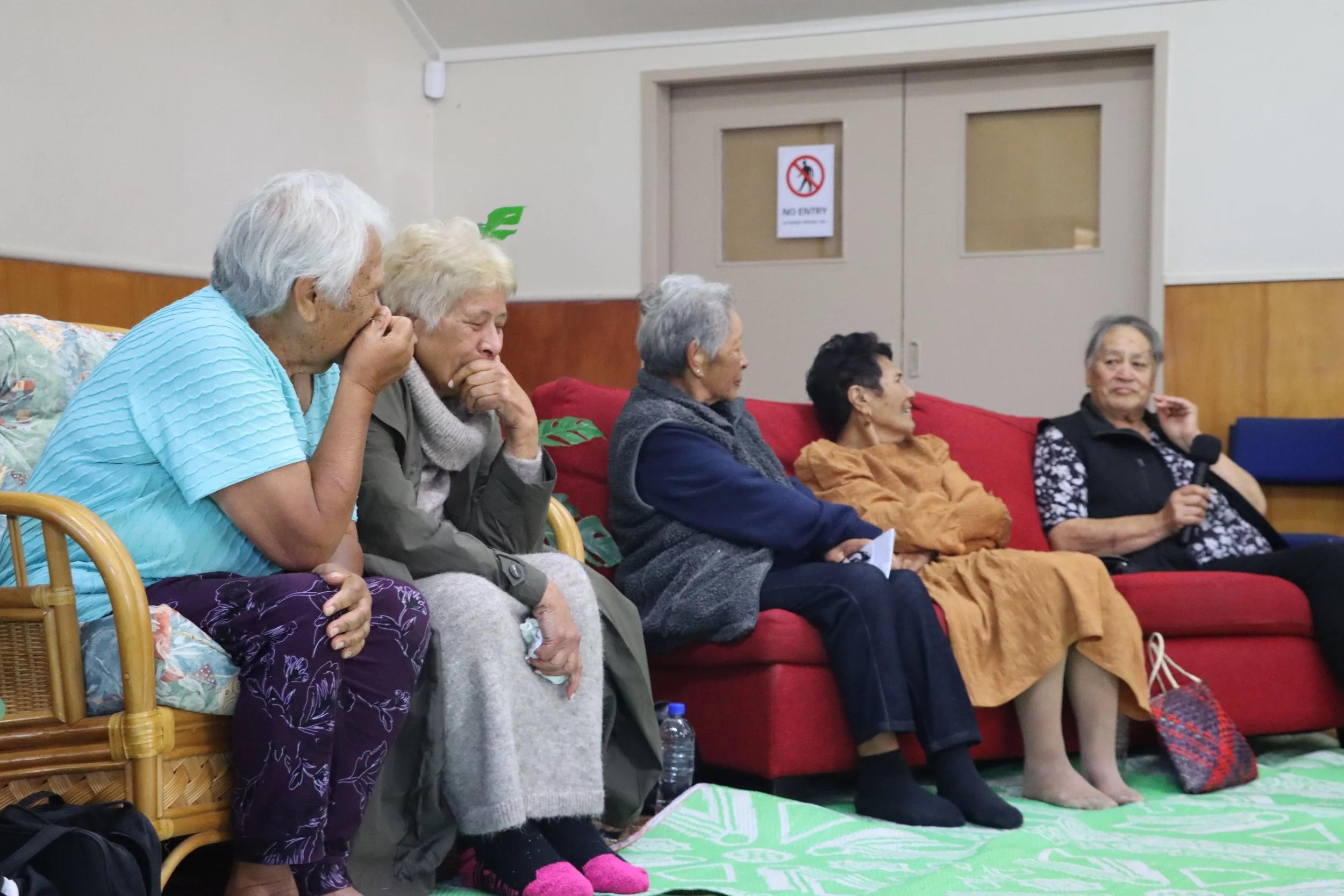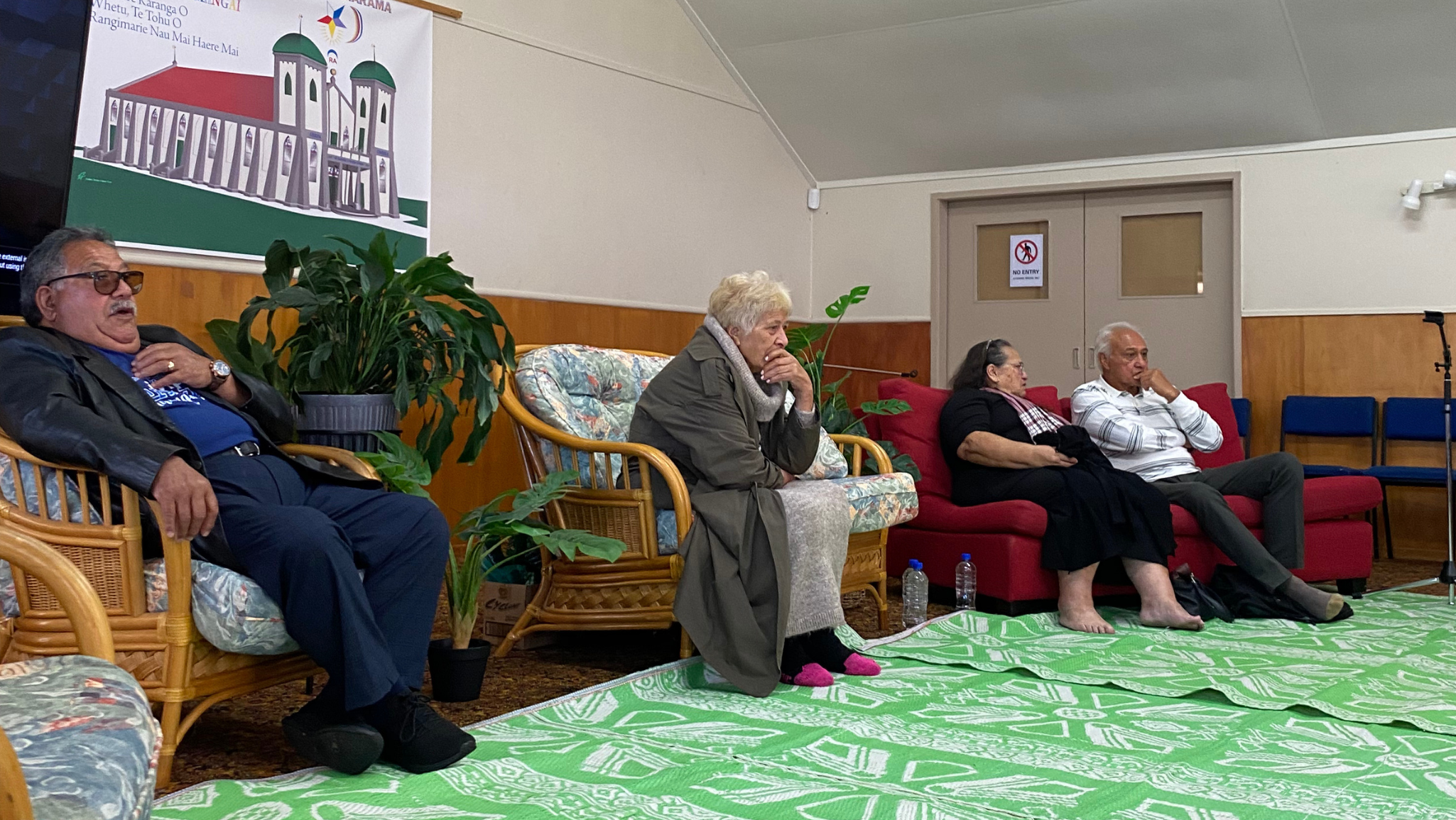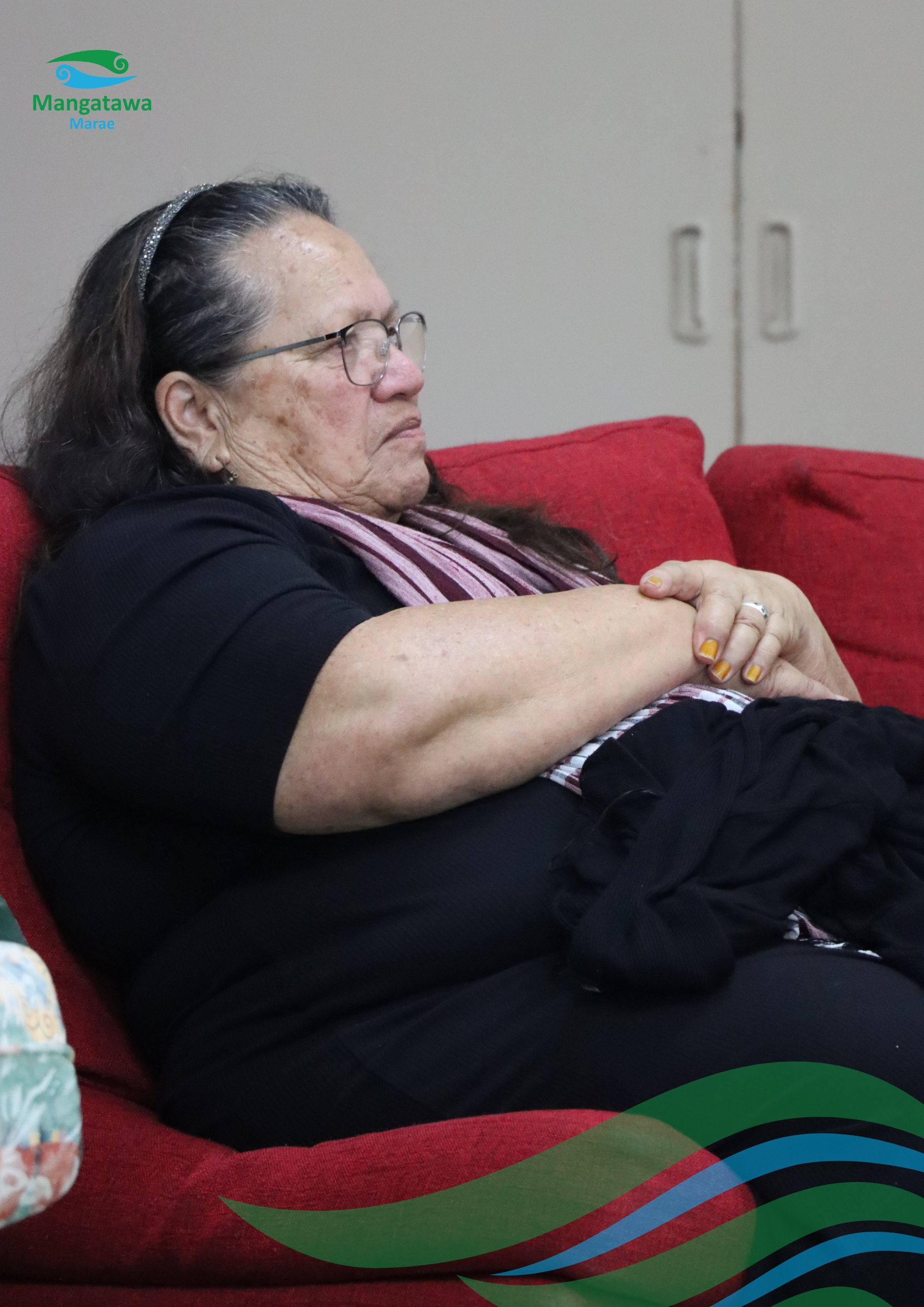Reflections from the Mangatawa Marae History Symposium
Panel 1: Rangi Wepiha, Huriana McLeod-Taite, Uru Flintoff, Te Rangipahoka Oliver & Geranium Harawira.
Today, the whare at Mangatawa came alive, not just with people, but with memory, meaning and spiritual resonance. The symposium held to honour the history of Mangatawa Marae was more than a gathering, it was a reaffirmation of purpose and identity.
The symposium was opened by Apotoro Rehita Pahu Akuhata and closed by Apotoro Rehita Rotiki Williams - thoughtful words, setting us on the right path for the day.
Masterfully guided by Vince Campbell, the day unfolded with warmth and wisdom. The first panel featured four powerful voices: Huriana Taite, Uru Flintoff, Geranium Harawira, and Rangi Webster. The second panel included Gus Wepiha, Te Whetu McLeod, Huriana Taite and Taima Webster-Allen, each bringing their own lens to the kaupapa, illuminating different facets of the Marae’s journey.
From the staunch Nan’s to the Wharfies to the Koros that were kept in line by the staunch Nannies, to the builders that were kept in line by the Nannies, the cheekiness, the aroha and the cleverness of our kaumātua was all laid out.
Huriana Taite opened with a kōrero about the establishment of a whare dedicated solely to the Morehu. This was to be a place where the Morehu could stand free, unbound by Crown restrictions or whakapapa-based claims that were rooted in colonial systems. Instead, the whare was born from a spiritual calling, grounded in the 1931 Kawenata signed by the Tauranga Morehu. This covenant pledged allegiance to the one true God and upheld a sacred commitment to:
Acknowledge only te Matua, te Tama me te Wairua Tapu;
Keep holy the Trinity;
And atone for the sins of our ancestors.
Tekoteko and ancestral carvings were deliberately excluded, not to diminish tūpuna, but to shift the focus toward a new legacy of faith, peace and spiritual sovereignty. It is this deeper spiritual purpose that inspired the people of Ngā Pōtiki to follow Te Māngai.
Rangi Webster and Geranium Harawira grounded us in the whenua, sharing how Taranaki Lane played a pivotal role in resourcing the Marae’s construction. From crops to communal labour, everything grown and shared went toward the whare’s realisation.
Uru Flintoff reflected on the connection Kairua Road had to this kaupapa. Whānau in that area also cultivated crops and contributed to the fundraising efforts, working in harmony with the vision and legacy that would become Mangatawa Marae. Their collective efforts remind us that the Marae’s foundation is not just spiritual but deeply practical, grown from the soil by the hands of many.
These kuia remind us of Ngatuahine, our whare that was named for our Nannies and Aunties of that era who worked the kūmara and riwai fields, preserved the jams, sold the kai on the side of the road, ran the housies, sewed the pillow cases and more, not only to fundraise to build Ngatuahine but to also service all of Tauranga Moana Marae right down to Ratana Pā.
We come from a matriarchal marae which can still be seen today - as our Nannies called the shots back then. It was recalled that the only time Jimmy Cookson didn’t ask for permission was when the Whetu Marama was erected in the window of Ngatuahine which was hugely significant as he was of Katorika faith, yet he felt the wairua and aroha that these morehu had.
Te Whetu Mcleod, Huriana Taite, Taima Webster-Allen & Gus Wepiha
The second panel ushered in a reflective and forward-looking tone, led by Te Whetu McLeod, Thomas (Gus) Wepiha and Taima Webster-Allen.
Te Whetu McLeod delivered a stirring wero to the people. He spoke of the shifting tides, the changing dynamics of Te Ao Māori and the risk of losing the original purpose of the Marae amid modern interpretations and evolving tikanga. He posed a profound question to whānau:
“As our tamariki and mokopuna come through Kohanga, Kura Kaupapa, Wharekura and Whare Wānanga, how do we retain our Maramatanga and our history here.
His kōrero reminded us that Mangatawa Marae is not just a site of gathering but a spiritual anchor that without conscious effort, that anchor could drift.
Thomas (Gus) Wepiha brought warmth and memory to the panel with his recollections of growing up around the Marae. He spoke of the people of that era, and the duties he fulfilled as a youngin, grounded in service and understanding. He paid tribute to his Webster Whānau, whose lives were guided naturally by Te Ture Wairua and Te Ture Tangata. He explained how instinctively they moved between the spiritual and the physical and how essential it is to maintain balance between these realms. For Gus and his whānau, this dual responsibility wasn’t taught, it was lived.
Gus fondly remembers and acknowledges the change at the time that was needed when our whānau turned to Te Haahi Ratana. On the same vein as Whetu’s wero, he recognises that their generation and above had a different relationship with Te Ao Māori and Ihoa, but now we are seeing a shift with our rangatahi who have a new relationship, serving the question of how we tell our story to include them too.
Taima Webster-Allen reinforced Gus’s korero and highlighted the hard work whanau did during this period including those in komiti roles - everyone played a role.
Kaupapa McLeod who was unable to attend in person, had a speech shared which talked of the stories of all of the whanau who were involved in that early period, the feats they accomplished and the innovations they put in place, all underpinned by a deep and abiding faith.
Tīramarama mai te Whetu Marama. What we witnessed in the wonderings of our whānau and the memories of our kaumātua were sparks of inspiration and admiration reminiscent of the series of tohu that were observed in that era, such as the lights that were seen dancing above this whenua our marae stands on.
As a heartfelt token of appreciation, each speaker was presented with a handwoven flax flower, a symbol of aroha and gratitude. These taonga were a beautiful reflection of the manaakitanga that underpinned the entire day.
Through each speaker, the symposium reminded us that Mangatawa Marae is not just a building. It is a covenant. A taonga created not out of obligation but out of divine direction. A place rooted in wairua and whenua, a living expression of the Morehu’s unwavering commitment to Ihoa onga mano.
As the day closed, one thing was clear: the story of Mangatawa is not just a history to be remembered. It’s a legacy to be lived and a wero for the generations to come.
He mihi aroha tēnei ki ngā kaiwhakarite, ngā kaitunu, ngā kaiwhakahaere, ngā kaitautoko, ngā ringa manaaki me ngā whānau katoa i tatu iho mai ki waenganui i a tātou i tēnei rā.
Ngā whakamoemiti ki te Matua, Tama, Wairua Tapu, ngā Anahera Pono me te Māngai Arepa Omeka Piriwiritua Hāmuera me te Māngai ano kei roto hei tautoko mai Aianei Akenei Ae.

























